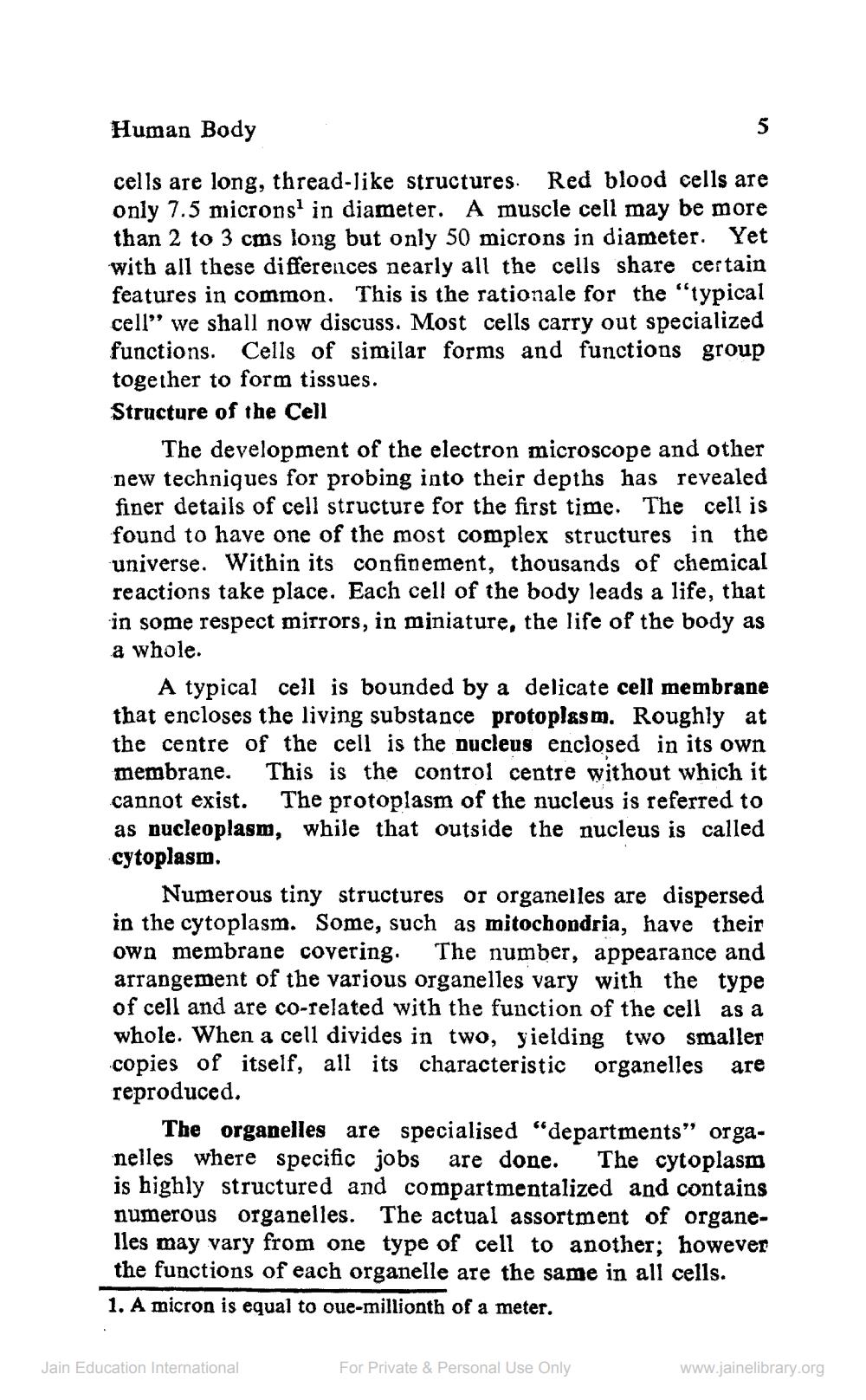________________
Human Body
cells are long, thread-like structures. Red blood cells are only 7.5 microns1 in diameter. A muscle cell may be more than 2 to 3 cms long but only 50 microns in diameter. Yet with all these differences nearly all the cells share certain features in common. This is the rationale for the "typical cell" we shall now discuss. Most cells carry out specialized functions. Cells of similar forms and functions group together to form tissues.
Structure of the Cell
The development of the electron microscope and other new techniques for probing into their depths has revealed finer details of cell structure for the first time. The cell is found to have one of the most complex structures in the universe. Within its confinement, thousands of chemical reactions take place. Each cell of the body leads a life, that in some respect mirrors, in miniature, the life of the body as a whole.
5
A typical cell is bounded by a delicate cell membrane that encloses the living substance protoplasm. Roughly at the centre of the cell is the nucleus enclosed in its own membrane. This is the control centre without which it cannot exist. The protoplasm of the nucleus is referred to as nucleoplasm, while that outside the nucleus is called cytoplasm.
Numerous tiny structures or organelles are dispersed in the cytoplasm. Some, such as mitochondria, have their own membrane covering. The number, appearance and arrangement of the various organelles vary with the type of cell and are co-related with the function of the cell as a whole. When a cell divides in two, yielding two smaller copies of itself, all its characteristic organelles reproduced.
are
The organelles are specialised "departments" organelles where specific jobs are done. The cytoplasm is highly structured and compartmentalized and contains numerous organelles. The actual assortment of organelles may vary from one type of cell to another; however the functions of each organelle are the same in all cells. 1. A micron is equal to oue-millionth of a meter.
Jain Education International
For Private & Personal Use Only
www.jainelibrary.org




